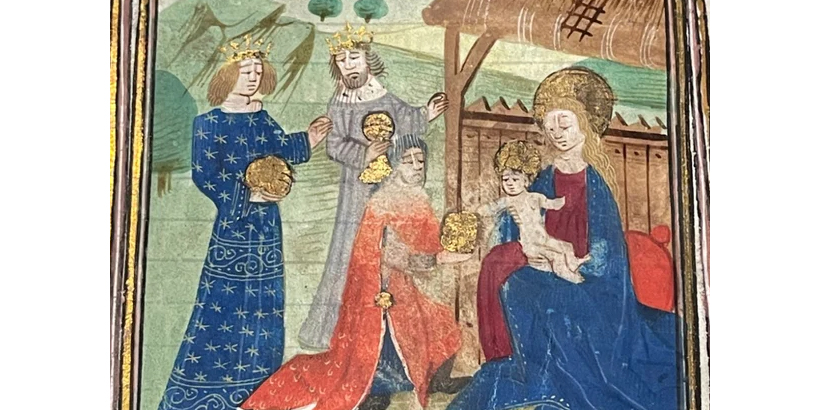New Rare Book and Manuscript Acquisitions Help Tell the Story of Christianity
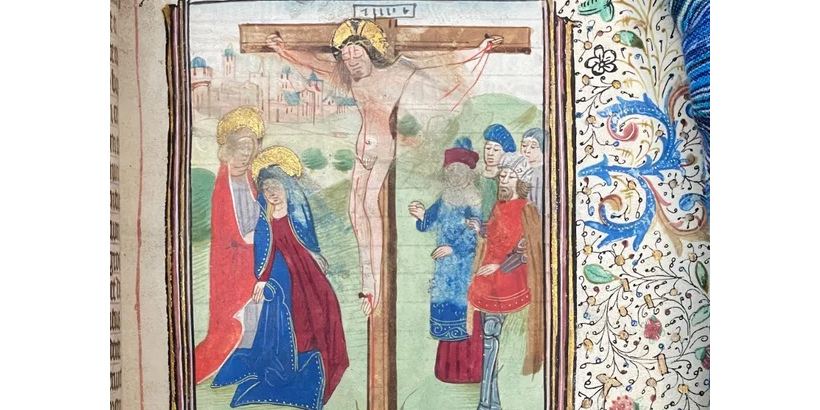
Pepperdine Libraries is pleased to announce the addition of several important items
to its teaching and research collection of rare books and materials available to faculty,
students, and scholars this fall. The new acquisitions give students more opportunities
to engage directly with unique primary sources, deepening their understanding of history,
culture, and ideas in ways that go beyond textbooks. These hands-on experiences foster
critical thinking, curiosity, and a stronger connection to the past.
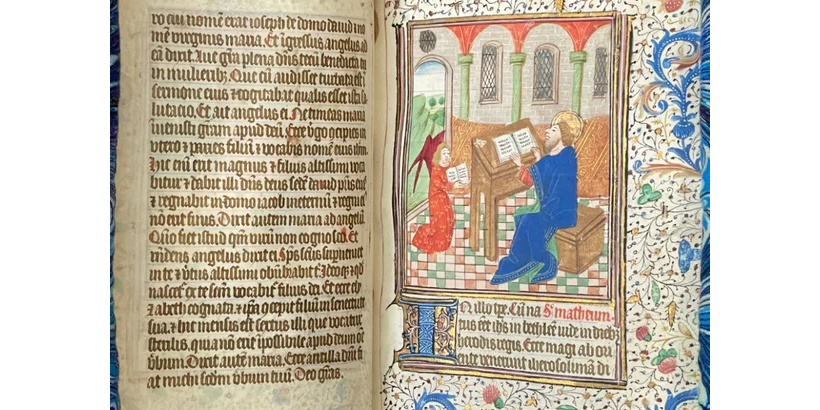
The hallmark acquisition over the last year was the procurement of a 15th-century illuminated Book of Hours. Produced in Bruges (present-day Belgium) between 1450 and 1460, the manuscript is a handwritten and illustrated devotional text containing prayers, psalms, and other texts for specific times of the day. These types of manuscripts were extremely popular in the late Middle Ages, especially in a place like Bruges where an expanding, prosperous merchant class was increasingly able to afford such luxuries. The Book of Hours is from what’s known as the workshop of the Masters of the Beady Eyes, who were active in Ghent and Bruges at the time and are recognized by the characteristic way of drawing a small beady dot to represent the eyes of figures. The 22 impressive illustrations, combined with richly adorned script and gilt floral patterns, make this an exceptional example of a medieval illuminated manuscript.
Les Pseaumes de David is a French metrical translation of the Psalms of David. Originally begun by Clément
Marot in the 16th century and later completed and expanded by Théodore de Bèze, it
renders the biblical Psalms into rhymed French verse suitable for singing in Protestant
worship. Our edition from 1672 is historically important because it's a Protestant
text published in Paris less than 15 years before Louis XIV outlawed Protestantism
in France with the Revocation of the Edict of Nantes (1685). The book’s unique binding
style is named after Charenton, the location of the temple that was the only place
of worship authorized for Parisian Protestants during the regime of tolerance established
by the Edict of Nantes in 1598 following the 16th-century wars of religion. The acquisition
gives insights into what French Protestants were reading just before the community
had to go underground.
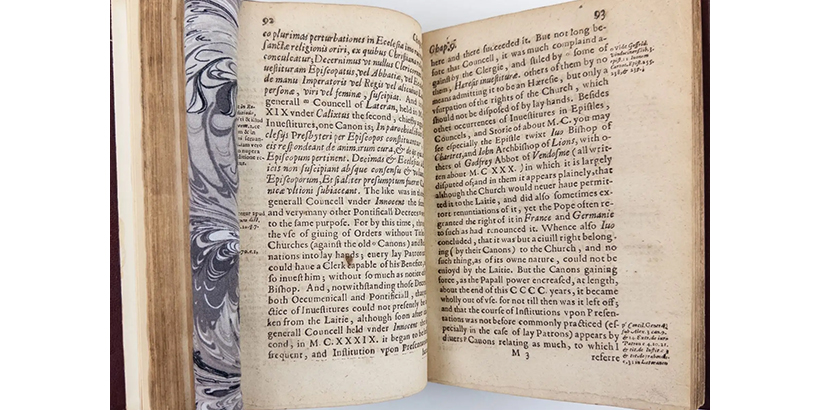
In his nearly 500-page treatise The Historie of Tithes, renowned Hebraist John Selden challenged the Church of England by arguing that tithes were a man-made custom, not a divine command from the early Christian era. Drawing on historical records, canon law, and classical sources, Selden applied rigorous scholarship to question a key source of clerical income and authority. The book sparked intense controversy, leading to its suppression and Selden’s forced apology. Despite censorship, its ideas influenced later critics of church power and contributed to broader debates over the relationship between church, state, and property rights. We’re delighted to share that we've obtained a first-edition printing from 1618.
A hundred and fifty years later, Hugh Farmer’s An Essay on the Demoniacs of the New Testament (1775) also challenged long-practiced customs in the church. Farmer offered a controversial
reinterpretation of New Testament accounts of demonic possession, arguing they described
natural illnesses rather than literal demons. By framing these events as misunderstandings
shaped by the cultural beliefs of the time, Farmer disputed traditional supernatural
explanations of scripture. His work reflected the Enlightenment’s emphasis on reason
and sought to reconcile biblical interpretation with emerging scientific and medical
knowledge. Though criticized by orthodox theologians, it influenced later liberal
theology and helped open the door to more historical-critical readings of the Bible.
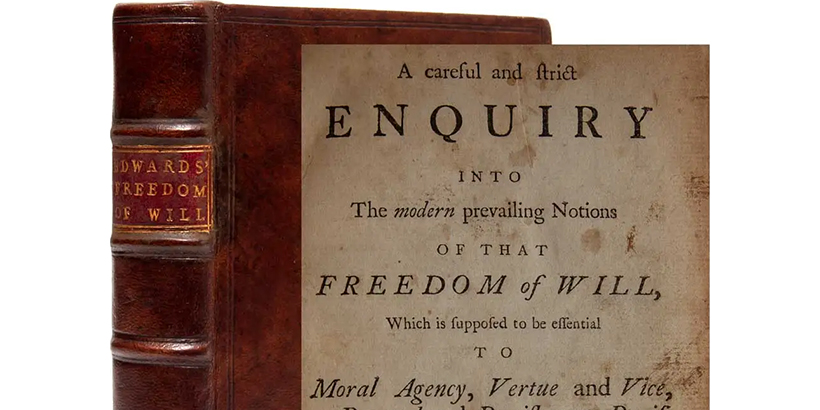
Jonathan Edwards’s A Careful and Strict Enquiry into the Modern Prevailing Notions of that Freedom of
Will (1754) is generally regarded as the first great philosophical work to be written
and published in America. Edwards argues that true moral agency is compatible with
divine predestination. The work shaped not only Calvinist theology in colonial New
England but also broader transatlantic debates on determinism, human nature, and the
relationship between God’s sovereignty and human choice.
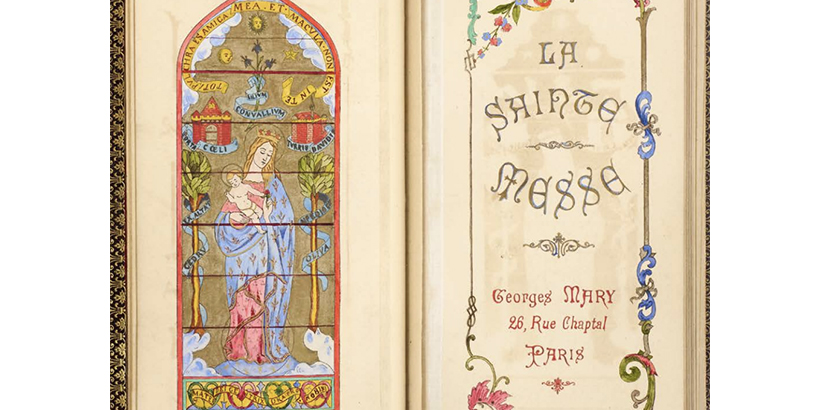
Parisian lithographer Georges Mary’s La Sainte Messe from 1892 is a Roman Missal, the book that contains the texts and rubrics for the celebration of the Catholic Mass. The Missal features lithographed text and is hand-colored and gilded in the style of a medieval manuscript blended with elements of Art Nouveau, popular throughout Paris in the late nineteenth century. This is apparent in the wonderful frontispiece showing the Virgin and Child. The addition to our collection is also unique because it contains a silk bookmark and handwritten notes by Marie Adrienne Jeanne Emilie Baré (1882–1949), the Missal’s original owner. According to the notes, her communion and confirmation occurred in 1893—the year after the book’s publication—leading us to surmise it may have been a gift to celebrate her religious milestones. The Missal gives us a window into religious practice in France at the end of the 19th century.
Finally, we added another Bible to our already notable collection of Holy Scriptures. The addition is a King James version of the New Testament published in London in 1847. It features illustrations by British caricaturist and illustrator Kenny Meadows, best known at the time for his drawings of Shakespeare. Notably, the copy includes a folded map of the Holy Land drawn by Meadows.
“Each new addition to our Special Collections registers how women and men from the
past put their Christian faith into practice—through acts of worship, translation,
and artistic expression, through the study of theology and church history, and sometimes
even through skepticism and uncertainty,” said Jonathan Koch, assistant professor
of English and coordinator of digital humanities. “Their elegant bindings, lively
visual images, and carefully handwritten and typeset pages show the value placed on
books as vehicles for expressing the incarnate Word. Together these books also teach
us to recognize the continuities and the ruptures that mark the history of Christianity
from the late Medieval period through the Reformation and into the Enlightenment.
I am excited to explore these wonderful books with the students in my English and
Great Books classes; they add texture and color to Pepperdine’s already strong collections
in ecclesiastical and book history.”
